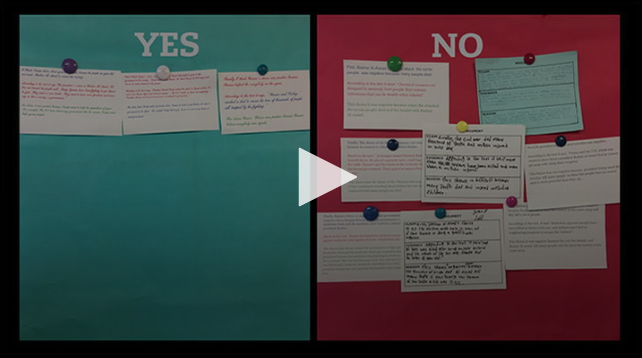As of today, there are nearly 5 million English Language Learners (ELLs) in U.S. schools, and ELLs are the fastest growing student population in the country. When these students enter school — especially in the secondary grades — they face the double challenge of learning a new language while simultaneously learning grade-level content in that language.
How can schools create learning environments designed to support these needs and accelerate learning so ELL students have a level playing field with their English-speaking peers?
In this new video series, Engaging Newcomers in Language and Content, we get to see newcomer ELL education in action by visiting Lawrence, Massachusetts, a city with a deep immigrant history and the home of the ENLACE Academy.

ENLACE, which stands for Engaging Newcomers in Language and Content Education, is an academy within Lawrence High School. Its mission is providing newcomer English learners with the academic and linguistic foundation and socio-emotional supports that will allow them to transition successfully and quickly into the mainstream high school environment, on track to pursue a college or career of their choice.
Combining the resources of a traditional public high school with the extra support of a small, specialized learning community, ENLACE’s program is built around three pillars:
- Language learning through rigorous content
- High expectations plus high supports
- A “two-generation” approach

VIDEO: Using Debate to Teach Academic Language
40-50% of ENLACE students are known as SLIFE — students with limited or interrupted formal education — which means they bring limited literacy and numeracy skills in their native language and need additional support adjusting to the expectations of U.S. high school.
The ENLACE academic model is based in the belief that students learn language best through challenging, engaging, and hands-on academic content, so all students take a variety of classes daily, including English, math, science, social studies, and an elective. All teachers are trained to teach language through their subject area, and while students are grouped in heterogeneous cohorts, personalized learning time is built into the day to allow students to get extra help in small groups.

In these videos from ENLACE, we visit the classrooms of two 9th grade teachers, Matt Clements and Joe Burkett, who both bring academic language to life through engaging, content and language-rich units. Matt teaches a leadership seminar, where he encourages his students to use critical reasoning skills through debate. In Using Debate to Teach Academic Language, you’ll see the debate structure used in a SLIFE classroom that’s focused on not just fostering academic language but on leadership skills as well.

VIDEO: Model UN for ELLs: Language & Leadership
Leadership is a strong theme at ENLACE, as students study and act upon global issues, learning how to become change agents in their community. In Model UN for ELLs: Language & Leadership, students engage with issues of climate change while building their academic discussion skills through opportunities to speak formally through the United Nations caucus process.
Both of these videos demonstrate ENLACE’s approach to language instruction: students learn and practice language as they read, write, speak, and listen about authentic, real-world issues in a learning community that supports risk-taking and confidence building. Through this approach, ENLACE empowers students to proudly and purposefully develop their multilingual and multicultural identities.

VIDEO: Scaffolding Text Structure for ELLs
Systemic practices for developing academic language across the curriculum are a key to ENLACE’s success. For example, common text structures, like a color-coded Claim-Evidence-Reasoning scaffold, provide students consistency in their classes as they develop their English language proficiency alongside their content knowledge and skills. Check out Scaffolding Text Structure for ELLs to see how students build on this common structure in their argumentation writing and speaking. Another example of a common, systemic practice in place across ENLACE is the use of Seven Step Vocabulary.

VIDEO: Seven Step Vocabulary
Since opening in 2015, ENLACE has achieved significant gains for English learners who have been in the U.S. less than two years. They have been able to accelerate students’ language growth, moving nearly 70% of students from a beginner to an intermediate level of English proficiency in just one year.
For more resources to help your English Language Learners, check out Teaching Channel‘s ELL Deep Dive.






